Excerpts from Jim Conrad's
Naturalist Newsletter
entry dated March 29, 2022, issued from near Tequisquiapan, elevation about 1,900m (6200 ft), ~N20.57°, ~ W99.89°, Querétaro state, MÉXICO
DESERT TOBACCO FLOWERING
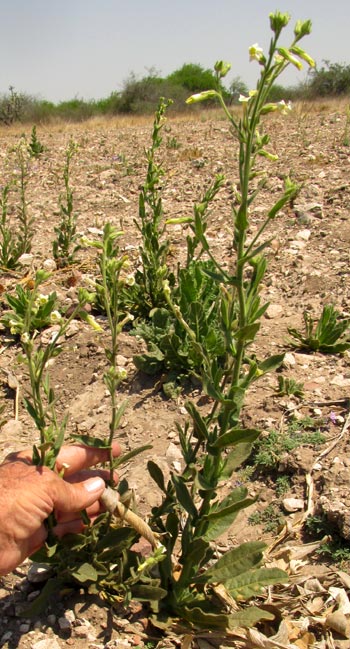 Late in the dry season, in the center of a dusty, rock-strewn, fallow cornfield, the small population of knee-high, flowering herbs turned up shown at the right. It was windy, so to steady the plants for taking a picture I reached in and held them. Though I'd never seen this species, at my first touch there was a flash of recognition. The leaves and stems were gummy-sticky, exactly like the tobacco that as a child I worked with out in the fields alongside my father and grandfather. Smelling my fingertips, the odor was that of green tobacco gum.
Late in the dry season, in the center of a dusty, rock-strewn, fallow cornfield, the small population of knee-high, flowering herbs turned up shown at the right. It was windy, so to steady the plants for taking a picture I reached in and held them. Though I'd never seen this species, at my first touch there was a flash of recognition. The leaves and stems were gummy-sticky, exactly like the tobacco that as a child I worked with out in the fields alongside my father and grandfather. Smelling my fingertips, the odor was that of green tobacco gum.
In fact, the plants' flowers were long and tubular like the blossoms on our head-tall cultivated tobacco, though the cultivated tobacco's flowers had been rosy/white instead of cream colored like these, and our farm tobacco's numerous flowers had been borne in multi-branched panicles, not a few flowers arranged in branching racemes as with this plant. Below you see one of our weed's inch-long (25mm) flowers:
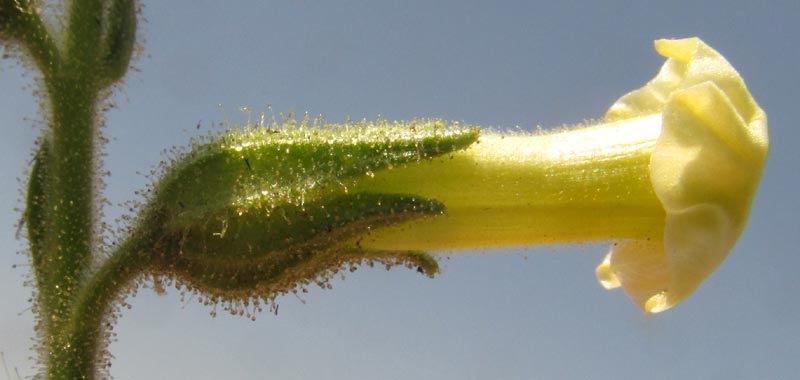
Just look at all the sticky, gland-tipped hairs covering all visible parts. Notice how the creamy corolla tube suddenly expands at its tip, forming something like a collection of petals. Below you can see the corolla tube's opening highlighted by the flaring skirt around around it.
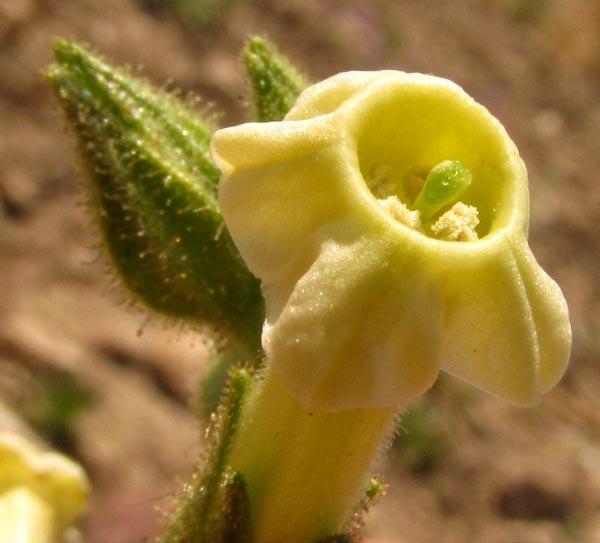
My family's cultivated tobacco plants had been pollinated by hummingbirds during the day and hawkmoths at night, so maybe that's the case with this plant. Whoever pollinates it, the flower's green, clubshaped stigma in the center of the corolla tube's opening awaits any pollen a visitor may bring. And the pollen grains on the flower's anthers just below the stigma stand ready to be scraped away and transported to other flowers by any withdrawing pollinator.
But, was our mid-cornfield weed really some kind of tobacco -- a member of the genus Nicotiana in the Black Nightshade Family, the Solanaceae? For more confidence that it really was, a flower was opened, revealing what's seen below:
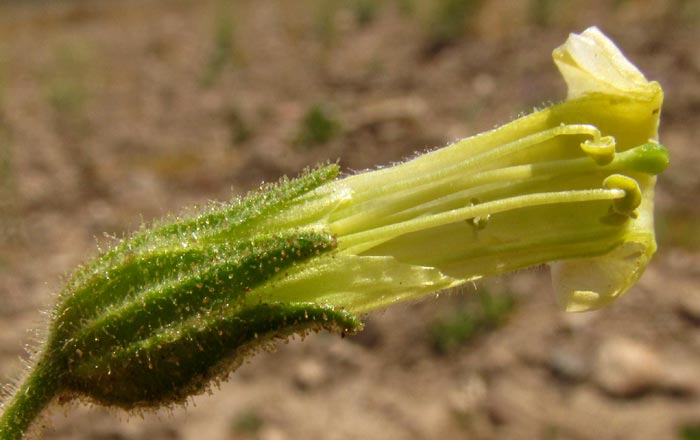
The single style with its club-shaped stigma, 5 stamens all more or less similar in shape though in this species having filaments of different lengths, are all like those of a tobacco flower. If I'd wanted more confirmation that we had a Nicotiana, I'd have cut a flower's ovary open, and if it had been filled with numerous ovules, the future seeds, and not just one or a few, that would have been more proof. However, despite my aversion to how humans smoke, chew and snort tobacco, I have sentimental feelings for tobacco plants, and didn't want to abort the seeds on this little plant out in the middle of a windblown, sunlight-parched field doing its best to provide viable seeds to assure a next generation.
Just for good measure, a picture of how the leaves attached to the stem was taken, again, reminiscent of how cultivated tobacco does it, seen below:
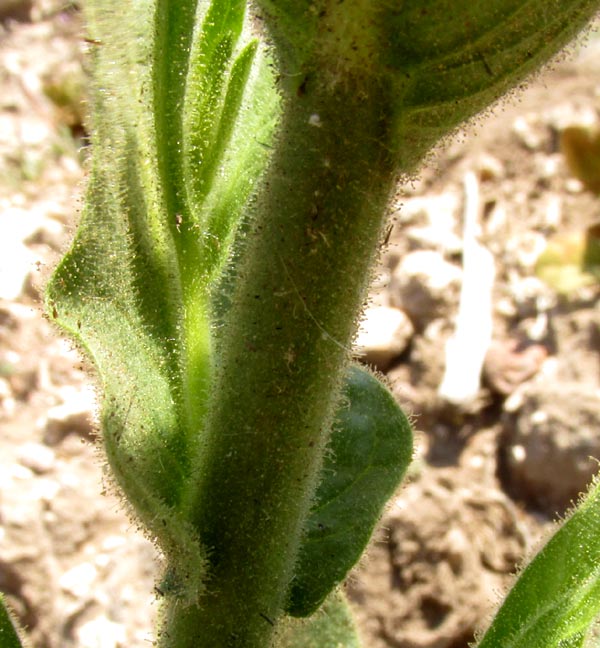
As usual, documents on the Internet clarified matters. The tobacco genus, Nicotiana, embraces about 60 species, mostly occurring in the Americas. In our part of arid upland central Mexico known as the Bajío, eight species are documented, of which four are native. Of those candidates, only one looks exactly like our middle-of-the-field plant, and that's the one often known at Desert Tobacco, NICOTIANA OBTUSIFOLIA. Some experts have shifted the species to Nicotiana trigonophyhlla, but now in 2022 most sources continue to use obtusifolia.
Desert Tobacco is native from arid western California to Texas, south into the Mexican uplands to about here, in central Mexico. Besides sun-scorched fallow cornfields, it's found on slopes, in canyons, rocky outcrops and in mountainous areas.
Like cultivated tobacco, Desert Tobacco contains nicotine, which is poisonous. Nonetheless, it's been used traditionally just as my grandfather Conrad suggested: Leaf smoke blown into an aching ear is supposed to cure earaches. The Cahuilla people were known to smoke it as part of various rituals, the smoke blown in the sacred directions, and other groups used it in similar ways. And of course many indigenous groups smoked Desert Tobacco just because they liked it.